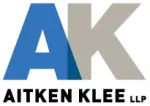The Federal Court has reversed the Trade-marks Opposition Board in another decision dealing with the evidentiary standard applied in a section 45 proceeding. Justice Fothergill's decision in Heather Ruth McDowell v. Laverana GmbH & Co. KG restored two registered marks on the basis that the Hearing Officer of the Trade-marks Opposition Board was unreasonable and clearly wrong.
The appeal before Justice Fothergill addressed a decision of the Trade-marks Opposition Board that ordered amendments to two registrations owned by Ms. McDowell: the word trade-mark "HONEY" and the following design mark:

The hearing before the Board was held after the Registrar issued a notice requiring Ms. McDowell to furnish proof of use of the marks under section 45 of the Trade-marks Act. At first instance, the Board held that the evidence before it was not sufficient to demonstrate that the "HONEY" mark was marked on goods themselves in a manner sufficient to provide notice of the association between the goods and the mark.
Ms. McDowell filed additional evidence on appeal which the Federal Court accepted and relied upon in reversing the Board. However, the main issue on appeal was whether Ms. McDowell's manner of displaying her mark constituted use of the mark in association with the goods sold. The Board was of the view that the "HONEY" branded hang tags were essentially price tags which did not distinguish the goods, and the "HONEY" mark used on shopping bags and in-store signage were simply a use in association with a retail store service, rather than the products themselves.
Justice Fothergill concluded that the decision of the Hearing Officer was unreasonable because the Hearing Officer had applied an unreasonably onerous burden of proof and purported to resolve contentious issues between competing commercial interests in a section 45 proceeding, contrary to the intended purpose of this section of the Trade-marks Act:
[19] In my view, the Hearings Officer's determinations of fact and law were contentious matters that were unsuited to resolution under the summary process envisaged by s 45 of the Trade-marks Act, particularly given the existence of a separate and ongoing inter partes dispute involving a competing trade-mark registered by the requesting party. Furthermore, hang tags and labels attached to goods would ordinarily be sufficient to demonstrate that a trade-mark was displayed in association with the goods during the relevant period...
Justice Fothergill also held that the decision of the Registrar was clearly wrong, in that he had resolved ambiguous evidence against Ms. McDowell when the jurisprudence dictated that ambiguities should be resolved in favour of the registered owner (citing Black & Decker Corporation, see our previous post here).
In the result, Justice Fothergill reversed the Hearing Officer's decision, allowed the appeal and ordered the original registrations for both trade-marks to be restored.
A copy of the decision may be found here.
The content of this article is intended to provide a general guide to the subject matter. Specialist advice should be sought about your specific circumstances.

